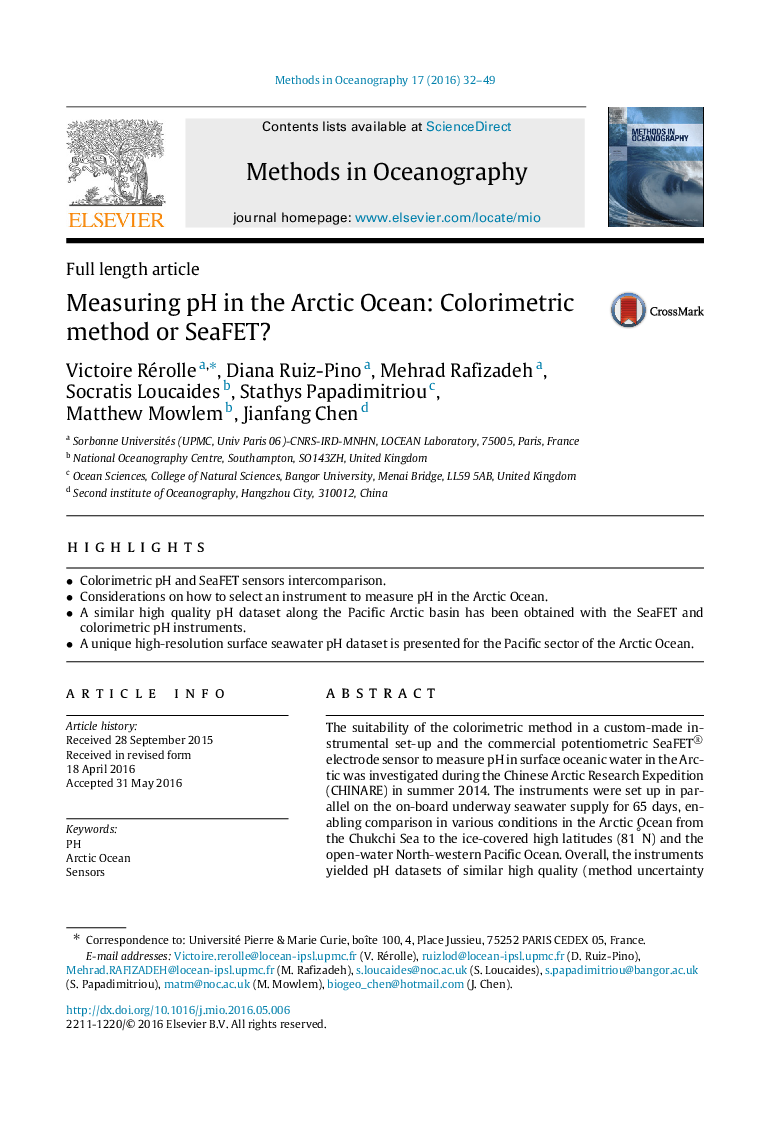| Article ID | Journal | Published Year | Pages | File Type |
|---|---|---|---|---|
| 8060374 | Methods in Oceanography | 2016 | 18 Pages |
Abstract
The suitability of the colorimetric method in a custom-made instrumental set-up and the commercial potentiometric SeaFET®electrode sensor to measure pH in surface oceanic water in the Arctic was investigated during the Chinese Arctic Research Expedition (CHINARE) in summer 2014. The instruments were set up in parallel on the on-board underway seawater supply for 65 days, enabling comparison in various conditions in the Arctic Ocean from the Chukchi Sea to the ice-covered high latitudes (81°N) and the open-water North-western Pacific Ocean. Overall, the instruments yielded pH datasets of similar high quality (method uncertainty â¤0.010). Detailed comparison with the parallel colorimetric pH measurements indicated that the measurements with the SeaFET external electrode in the low salinity ice-covered area were problematical and that the internal reference electrode failed after almost 2 months of cruise. Reasons for discrepancies between the data from the two instruments and recommendations for the use of either instrument for pH measurements in the Arctic are discussed. Finally, the investigation yielded a reliable high-resolution pH dataset in surface waters along a transect from the Pacific to the Arctic Ocean. Large pH variations were observed in the ice-free Arctic surface waters, with pH ranging between 7.98 and 8.49. The highest pH values were observed at the ice edge, whereas a relatively invariable pH (8.02±0.02) was measured in under-ice seawater in the ice-covered Arctic Ocean. The high resolution surface seawater pH dataset obtained here could be used as reference to detect the on-going acidification rate in the Pacific Arctic.
Related Topics
Physical Sciences and Engineering
Earth and Planetary Sciences
Oceanography
Authors
Victoire Rérolle, Diana Ruiz-Pino, Mehrad Rafizadeh, Socratis Loucaides, Stathys Papadimitriou, Matthew Mowlem, Jianfang Chen,
